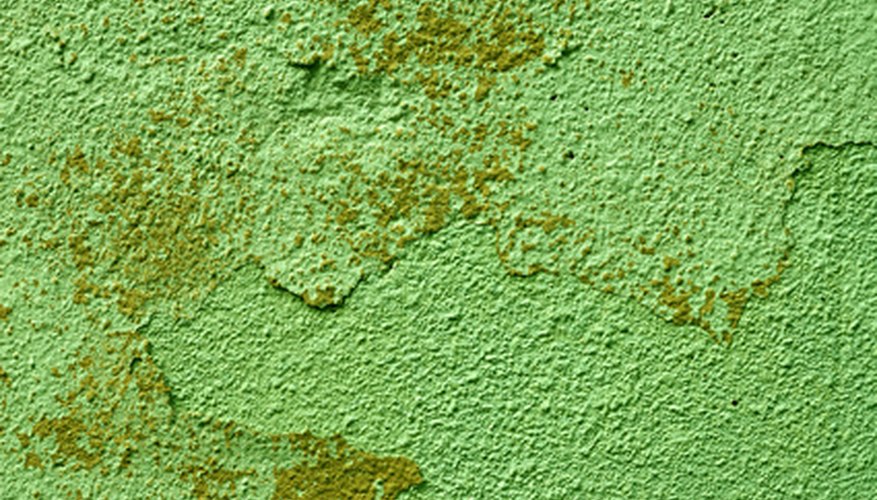Distemper paint is a traditional paint that is primarily made from glue. Many old historic homes have walls that have been painted with distemper paint. Due to the adhesive qualities of distemper paint, it can be quite difficult to remove. If the distemper paint is not peeling, chipping or flaking, it is best to leave it alone and paint over it. If the paint is corroding, you will have to remove it before you can repaint or refinish the wall surface.
- Distemper paint is a traditional paint that is primarily made from glue.
- If the distemper paint is not peeling, chipping or flaking, it is best to leave it alone and paint over it.
Use a fine grain sandpaper or a razor blade and carefully remove any visible paint chips. Do not use a harsh abrasive or rough sandpaper. Do not try to sand or cut away all of the distemper paint. Remove only the areas that are chipping and peeling.
Make a solvent to apply to the remaining distemper paint. Wear gloves and goggles when creating and applying the solvent. Make sure your legs and arms are covered to avoid chemical burns that can be caused by the caustic soda. Add a teaspoon of caustic soda to 470 ml (1 pint) of hot water and add cellulose wallpaper paste to the mixture until the water becomes thick like a gel. Use a wooden spoon and glass container to mix the ingredients. You can also purchase a paint solvent remover from a paint shop, hardware shop or specialist supplier.
Dip a paintbrush in the solvent and wipe it on a 30 cm x 30 cm (1 x 1 foot) wall area that is covered with distemper paint. Allow the gel to absorb into the paint for three minutes. Use a thick towel to wipe the area and remove the distemper paint. Repeat this procedure on other areas of the wall until all of the distemper has been removed. Keep your eyes, arms, legs and body completely covered during the application and removal process.
- Make a solvent to apply to the remaining distemper paint.
- Use a thick towel to wipe the area and remove the distemper paint.
Create a mixture of vinegar and water to get rid of any alkaline that is on the walls as a result of using the solvent. Mix 946 ml (1 quart) of water with 946 ml (1 quart) of vinegar in a plastic container. Dip a clean cotton cloth in the mixture and wipe it on the wall area where the distemper paint has been removed. Use gloved hands since some solvent could still be on the walls. The gloves will also keep your hands from smelling like vinegar. Repeat this procedure on the entire wall surface.
TIP
Choose a textured towel like an old hand towel or bath towel for removing the distemper paint. The rough cloth will help remove the distemper paint from the wall surface.
WARNING
Avoid wearing sunglasses as eye protection when using the solvent. Choose goggles that create a seal around your eyes. Keep the room well ventilated with open windows and fans during the application and removal process.
